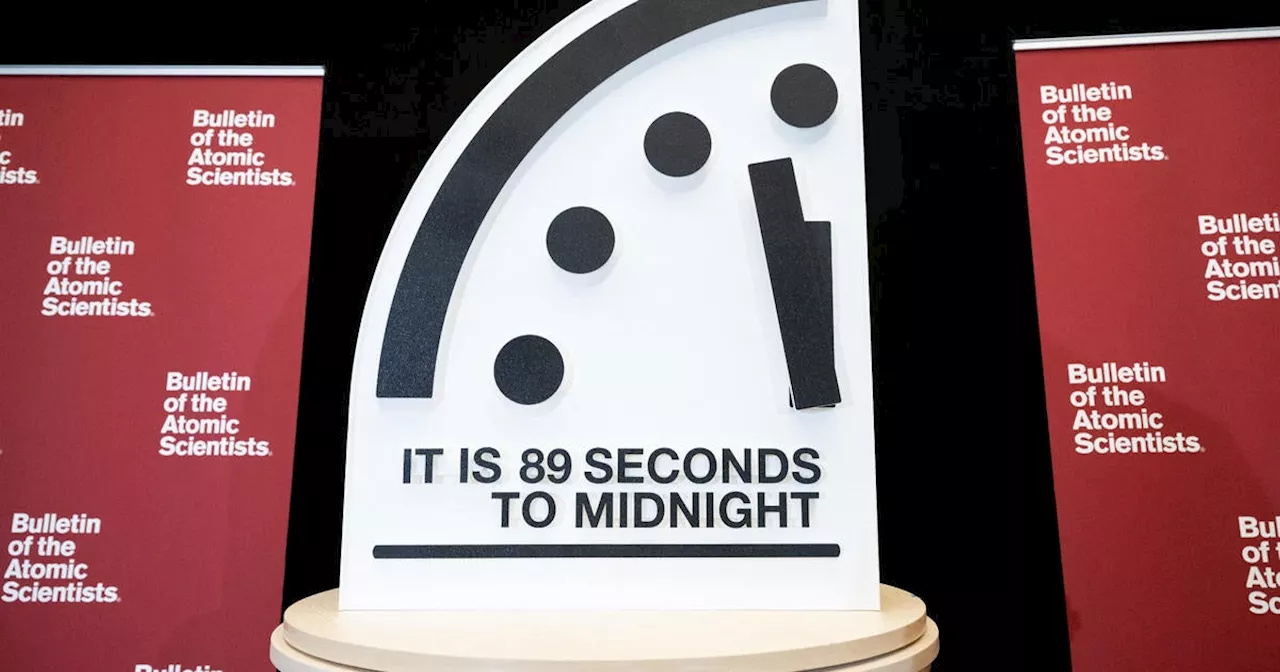The Doomsday Clock, a symbolic representation of humanity's proximity to global catastrophe, has been moved to 89 seconds to midnight, the closest it has ever been. This signifies a heightened sense of urgency regarding global threats such as nuclear weapons, climate change, biological threats, and disruptive technologies like artificial intelligence.
The Doomsday Clock was set at 89 seconds to midnight on Tuesday morning, marking the closest the world has ever been to what scientists consider a ' global catastrophe .' This decades-old international symbol, described by the University of Chicago-based nonprofit the Bulletin of Atomic Scientists as a metaphor for humanity's proximity to 'human extinction,' is adjusted annually. In January 2024, the clock stood at 90 seconds to midnight, aligning with its 2023 position.
This signifies the first time the clock has moved forward since 2023. The Bulletin of Atomic Scientists meticulously monitors man-made threats, focusing on three primary hazard areas — nuclear risk, climate change, and disruptive technologies — to determine the clock's placement. This year's clock position was determined based on 'nuclear weapons threats, the climate crisis, biological threats, and disruptive technologies like artificial intelligence,' as stated in a press release from the Bulletin. 'We set the clock closer to midnight because we do not see sufficient positive progress on the global challenges we face, including nuclear risk, climate change, biological threats, and advances in disruptive technologies,' said Daniel Holz, the chair of the Bulletin's Science and Security Board, which sets the clock, during a news conference Thursday. Special guest Juan Manuel Santos, former president of Colombia and Nobel Peace Prize Laureate, emphasized that the clock's forward movement can be reversed, but only if world leaders collaborate effectively. He highlighted President Trump's pledge to withdraw from the Paris Agreement and the World Health Organization as steps in the wrong direction. 'We can only succeed if we act as one,' Santos stated. Other board members pointed to escalating nuclear capabilities, proposals to integrate artificial intelligence into military operations, and the spread of disinformation online as major man-made threats. 'The 2025 Clock time signals that the world is on a course of unprecedented risk, and that continuing on the current path is a form of madness,' the Bulletin declared. 'The United States, China, and Russia have the prime responsibility to pull the world back from the brink. The world depends on immediate action.'The Bulletin of the Atomic Scientists was established in 1945 by Albert Einstein, J. Robert Oppenheimer, and University of Chicago scientists who played a pivotal role in developing the first atomic weapons during the Manhattan Project. The Bulletin created the Doomsday Clock two years later to communicate man-made threats to human existence and the planet. The Clock has evolved into a universally recognized indicator of the world's vulnerability to global catastrophe. The Science and Security Board, comprising scientists, nuclear technology and climate science experts, and members of the organization's sponsoring board, convenes twice a year to 'discuss world events and reset the clock as necessary,' according to its website.The Doomsday clock was instituted in 1947, according to the Bulletin's website, by scientists involved in the Manhattan Project. At that time, the proliferation of nuclear weapons technology was perceived as the world's most significant threat, with early iterations of the clock highlighting the risk of an arms race between the U.S. and the Soviet Union. Since 2007, climate change has emerged as a dominant concern influencing the clock's placement. The clock initially stood at seven minutes to midnight and has been adjusted 25 times since its inception. It can move both backward and forward, with movement away from midnight signifying that people can make positive changes. The hands were furthest from midnight in 1991, following the conclusion of the Cold War, according to the Bulletin
Technology World News Doomsday Clock Global Catastrophe Nuclear Weapons Climate Change Artificial Intelligence Bulletin Of Atomic Scientists
United States Latest News, United States Headlines
Similar News:You can also read news stories similar to this one that we have collected from other news sources.
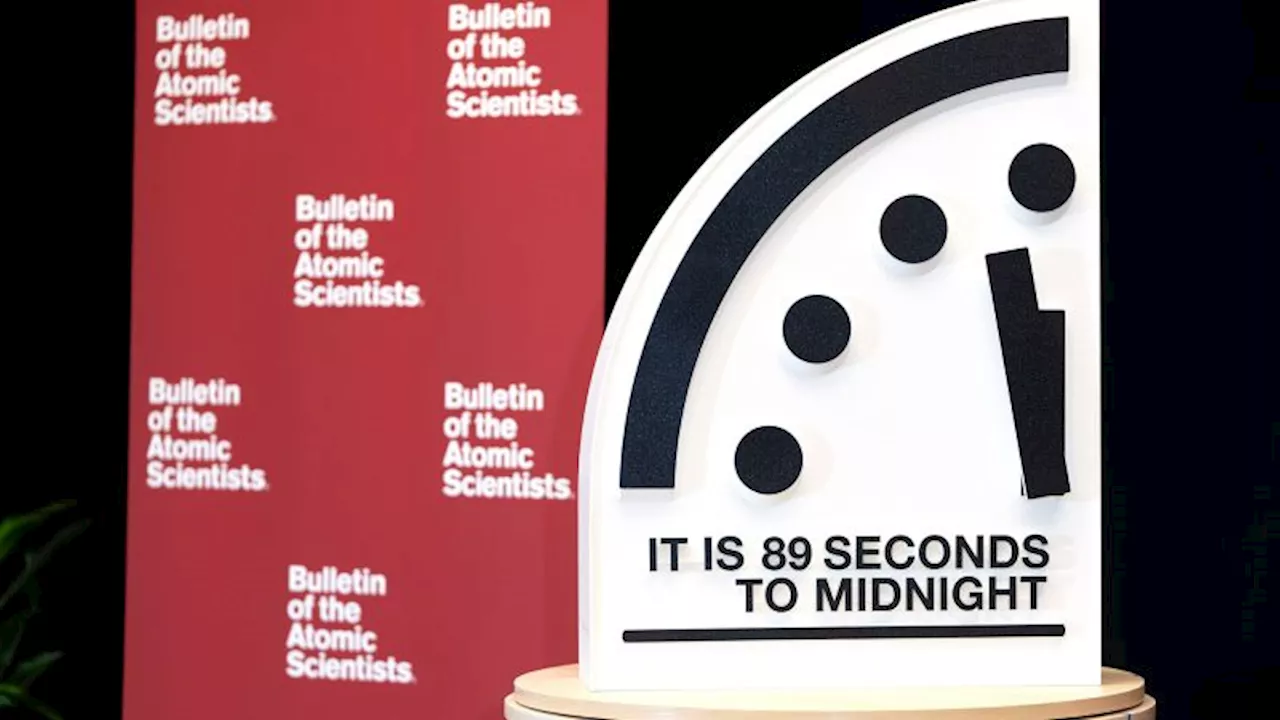 Doomsday Clock Set at 89 Seconds to Midnight, Closest Ever to Global CatastropheThe Doomsday Clock, a symbolic gauge of humanity's proximity to global catastrophe, has been set at 89 seconds to midnight, the closest it has ever been. The Bulletin of the Atomic Scientists, which established the clock in 1947, attributes the alarming shift to escalating nuclear threats, the ongoing war in Ukraine, climate change, and advancements in disruptive technologies. While the clock doesn't definitively measure existential risks, it aims to stimulate discussions about critical scientific issues and encourage global action.
Doomsday Clock Set at 89 Seconds to Midnight, Closest Ever to Global CatastropheThe Doomsday Clock, a symbolic gauge of humanity's proximity to global catastrophe, has been set at 89 seconds to midnight, the closest it has ever been. The Bulletin of the Atomic Scientists, which established the clock in 1947, attributes the alarming shift to escalating nuclear threats, the ongoing war in Ukraine, climate change, and advancements in disruptive technologies. While the clock doesn't definitively measure existential risks, it aims to stimulate discussions about critical scientific issues and encourage global action.
Read more »
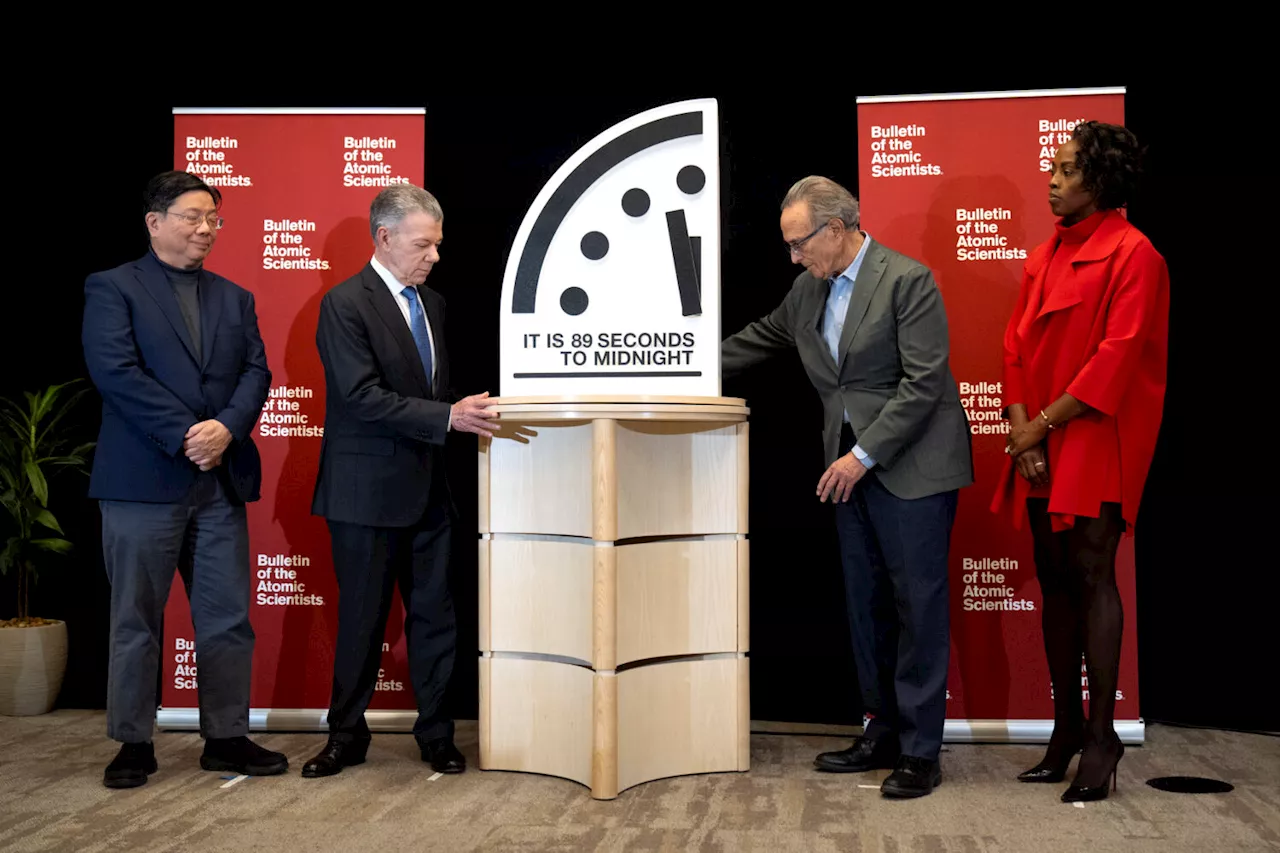 Doomsday Clock Set at 89 Seconds to Midnight, Closest EverA science-oriented advocacy group, the Bulletin of the Atomic Scientists, has moved its iconic Doomsday Clock to 89 seconds to midnight, the closest it has ever been. The alarming shift reflects growing threats to humanity, including climate change, nuclear proliferation, geopolitical instability, pandemics, and the increasing integration of artificial intelligence in military applications. The group warns of the dangers of escalating tensions and the potential for catastrophic events.
Doomsday Clock Set at 89 Seconds to Midnight, Closest EverA science-oriented advocacy group, the Bulletin of the Atomic Scientists, has moved its iconic Doomsday Clock to 89 seconds to midnight, the closest it has ever been. The alarming shift reflects growing threats to humanity, including climate change, nuclear proliferation, geopolitical instability, pandemics, and the increasing integration of artificial intelligence in military applications. The group warns of the dangers of escalating tensions and the potential for catastrophic events.
Read more »
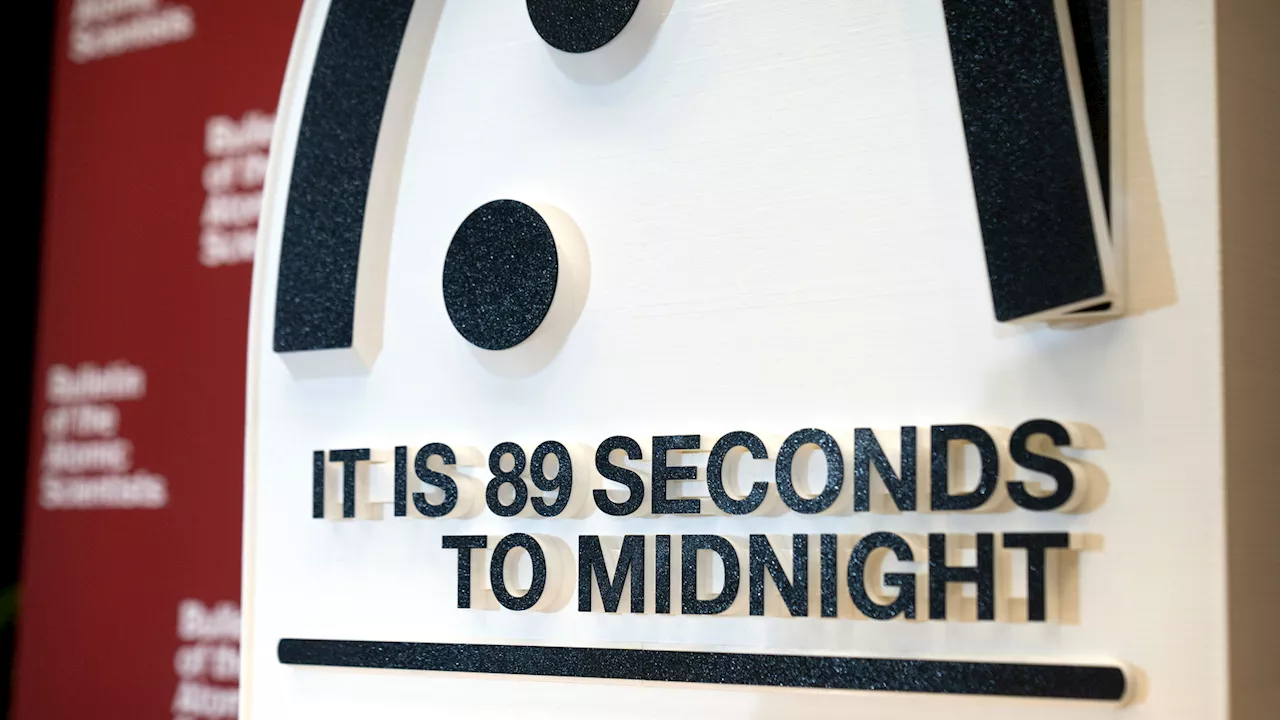 Doomsday Clock Set at 89 Seconds to Midnight, Closest EverThe Bulletin of the Atomic Scientists advances its iconic Doomsday Clock to 89 seconds before midnight, citing urgent threats including nuclear proliferation, climate change, and geopolitical instability.
Doomsday Clock Set at 89 Seconds to Midnight, Closest EverThe Bulletin of the Atomic Scientists advances its iconic Doomsday Clock to 89 seconds before midnight, citing urgent threats including nuclear proliferation, climate change, and geopolitical instability.
Read more »
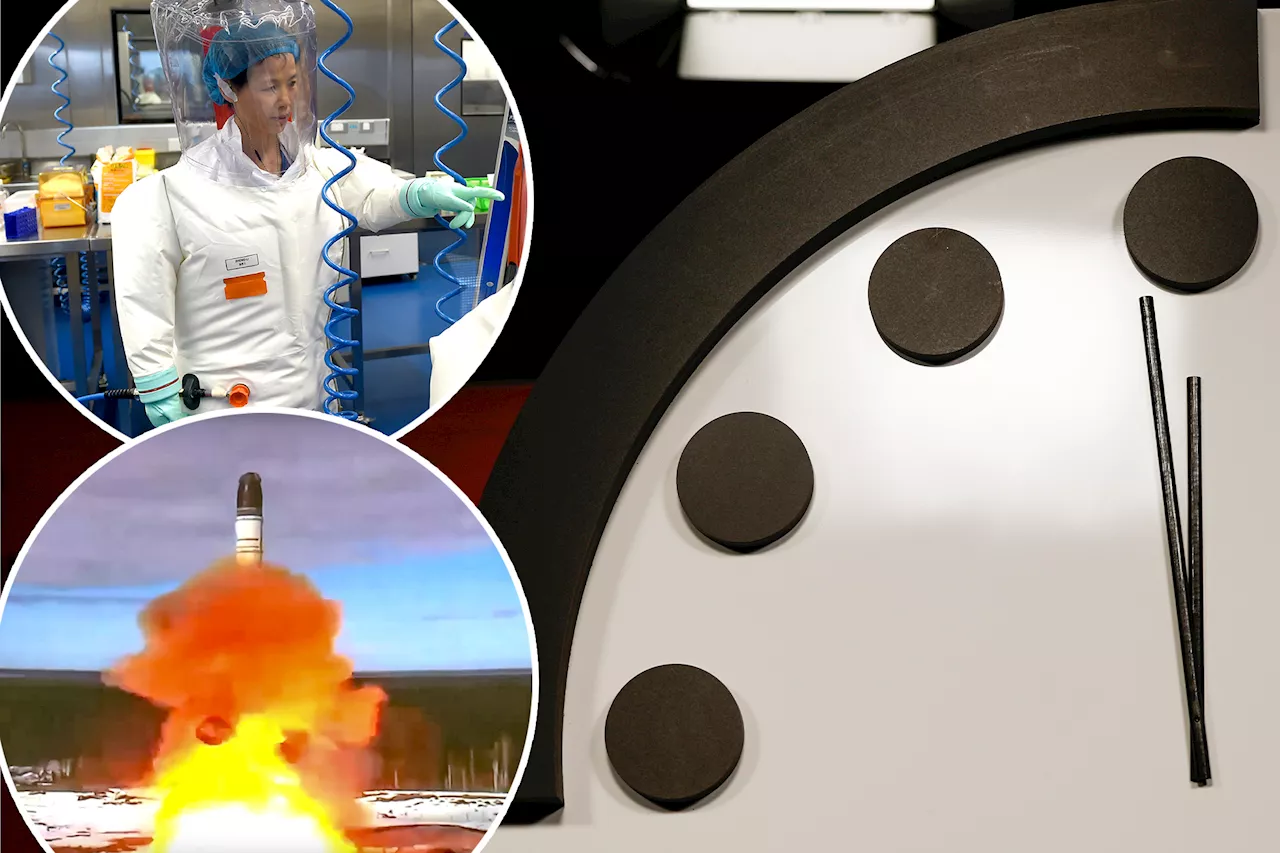 Doomsday Clock Moved to 90 Seconds to Midnight, Closest EverThe Bulletin of the Atomic Scientists has moved the Doomsday Clock forward by one second to 90 seconds to midnight, citing escalating global threats including nuclear proliferation, climate change, and disruptive technologies.
Doomsday Clock Moved to 90 Seconds to Midnight, Closest EverThe Bulletin of the Atomic Scientists has moved the Doomsday Clock forward by one second to 90 seconds to midnight, citing escalating global threats including nuclear proliferation, climate change, and disruptive technologies.
Read more »
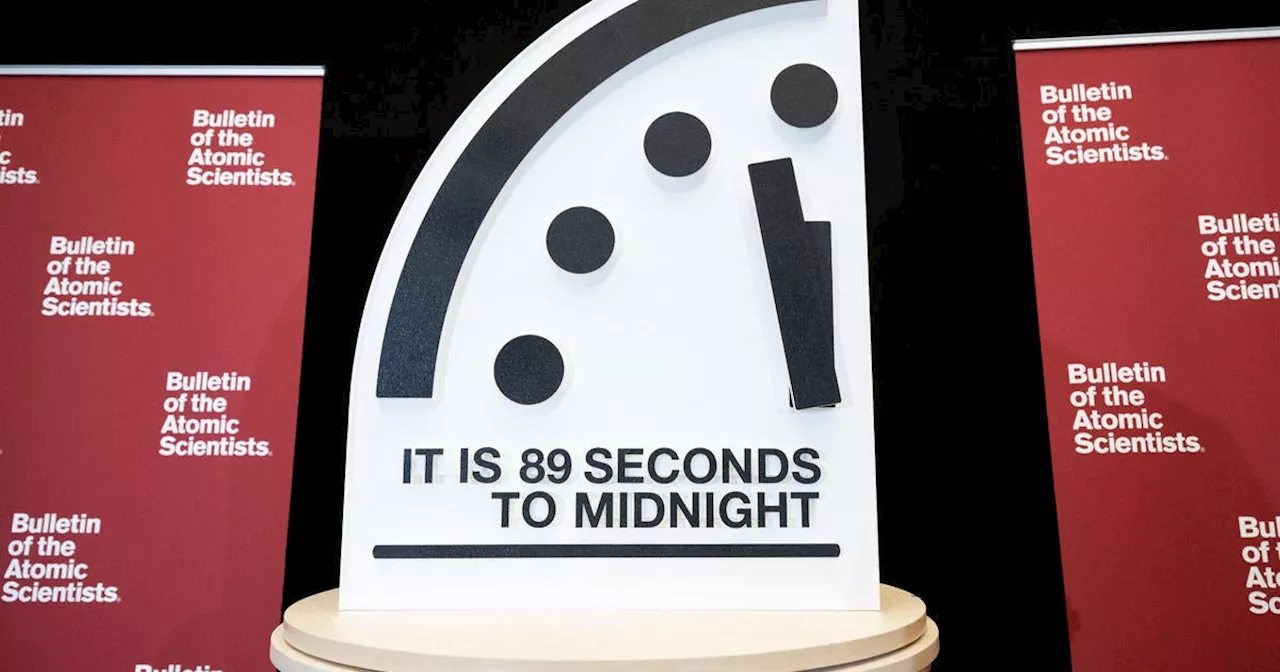 Doomsday Clock Moved to 89 Seconds to Midnight, Closest to Catastrophe EverThe Bulletin of Atomic Scientists has moved the Doomsday Clock to 89 seconds to midnight, the closest it has ever been to signifying global catastrophe. The decision reflects growing concerns about nuclear weapons threats, climate change, biological threats, and disruptive technologies such as artificial intelligence.
Doomsday Clock Moved to 89 Seconds to Midnight, Closest to Catastrophe EverThe Bulletin of Atomic Scientists has moved the Doomsday Clock to 89 seconds to midnight, the closest it has ever been to signifying global catastrophe. The decision reflects growing concerns about nuclear weapons threats, climate change, biological threats, and disruptive technologies such as artificial intelligence.
Read more »
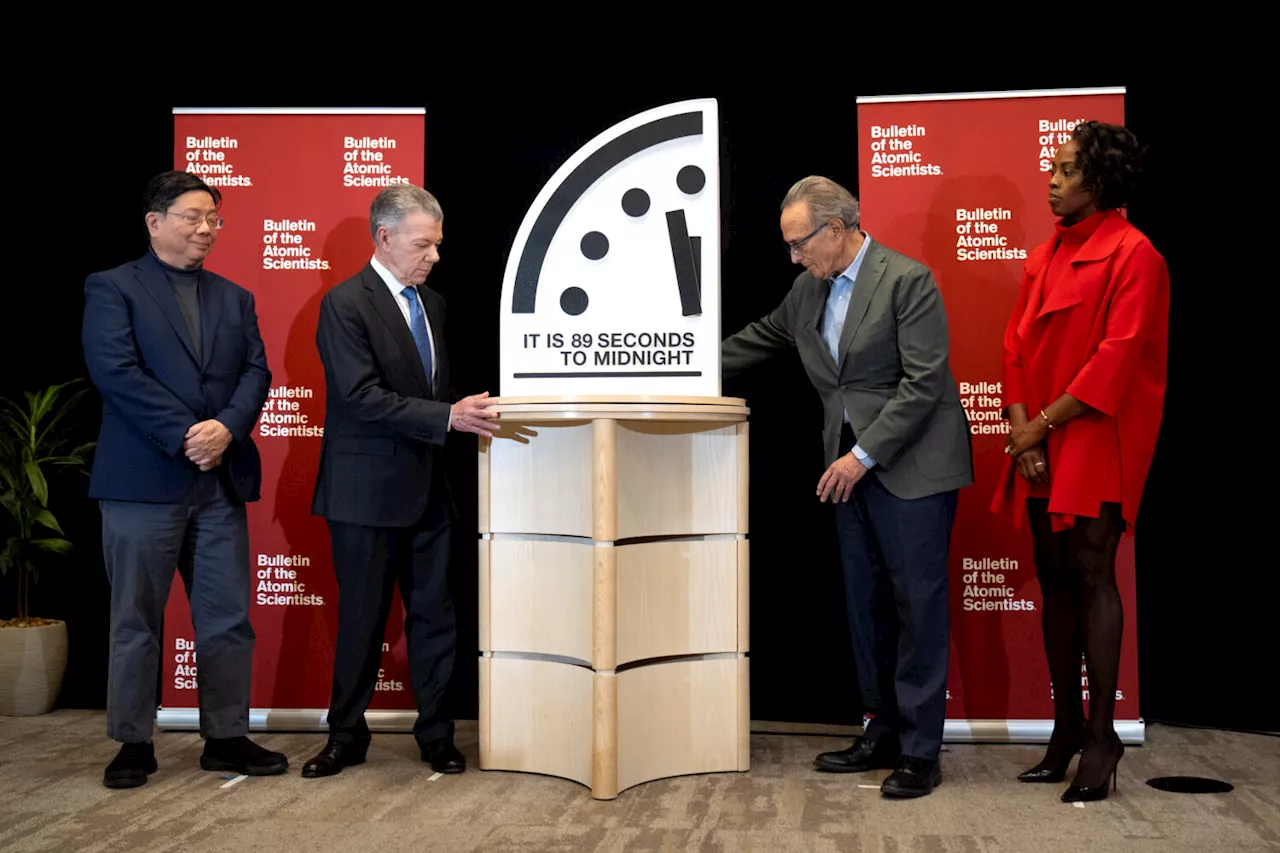 Doomsday Clock Moved to 89 Seconds to Midnight Over Global ThreatsThe Bulletin of the Atomic Scientists has moved its symbolic Doomsday Clock to 89 seconds to midnight, the closest it has ever been, citing threats such as climate change, nuclear proliferation, geopolitical instability, pandemics, and the increasing role of artificial intelligence in military affairs.
Doomsday Clock Moved to 89 Seconds to Midnight Over Global ThreatsThe Bulletin of the Atomic Scientists has moved its symbolic Doomsday Clock to 89 seconds to midnight, the closest it has ever been, citing threats such as climate change, nuclear proliferation, geopolitical instability, pandemics, and the increasing role of artificial intelligence in military affairs.
Read more »
